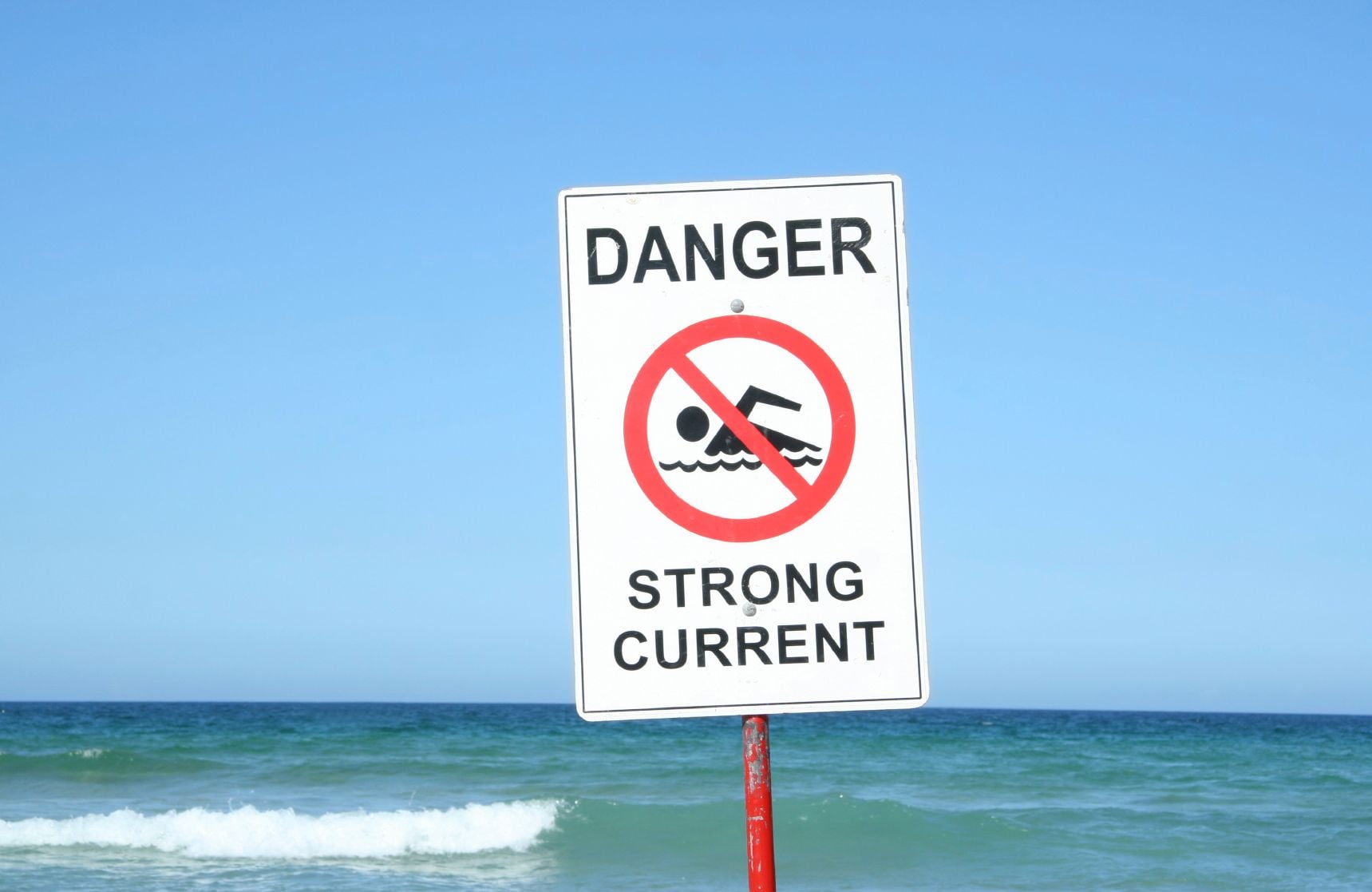Rip currents, heart health and water safety: The life-saving tips everyone needs to know
)
In Australia, rip currents remain the number one coastal hazard, involved in 35% of drowning deaths in 2024.
According to the Royal Life Saving Australia's National Drowning Report 2024, 323 people drowned in Australian waterways in the period from 1 July 2023 to 30 June 2024, representing a 16% increase on the ten-year average. Of the total drowning deaths:
- 265 (82%) were men and 58 (18%) were women
- 129 (40%) were adults aged 55 years and over
- 83 (25%) were people born overseas
- 84 (26%) of drowning deaths occurred at beaches, 81 (25%) at river and creek locations, and 45 (14%) in oceans and harbours.
Professor Robert Brander is a coastal geomorphologist with expertise in rip currents and a member of the Tamarama Beach Surf Life Saving Club. He is also the brains behind the original The Science of the Surf, an award-winning community beach safety education program for all ages. He wrote an article in 2014 for The Conversation, Don't get sucked in by the rip this summer, which still holds relevance today. At the time, he stated that 21 people drowned on average per year in rip currents on Australian surf beaches. It seems that nothing much has changed. According to the 2024 National Drowning Report, rip currents remain the number 1 coastal hazard, involved in 29 (35% of) beach drowning deaths in 2023/24.
As noted by Brandon back in 2014: "This [rip-related drowning deaths] exceeds the long term annual average of fatalities caused by bush fires, floods, cyclones and sharks combined." Interestingly, this suggests, an attitude of ambivalence towards rip hazards in Australia compared to shark attacks and bushfires which receive significant media attention and government funding commitments for developing interventions. Perhaps, as Brandon argues, this is motivated by the fact that "rip currents are always present and rarely result in more than one fatality at a time".
What is a rip?
A rip current is a strong, narrow, and often 'channelised' current of water that flows offshore through the surf zone and varying distances beyond. Rips are created as a means for water to be taken back out to sea after waves crash into the shore. Rip currents can flow very quickly offshore and can easily carry swimmers of all abilities. Most rip-related drowning deaths occur on unpatrolled beaches, away from surf lifesaving services.
Telltale signs of a rip
According to Surf Life Saving Australia's video, How to Spot a Rip Current, 70% of people cannot spot a rip, and 2 out of 3 people who think they can spot a rip get it wrong. Their extremely useful video explains the different types of rip currents from fixed to flash to mega rips along with tips on the tell-tale signs to watch out for before entering the water, including:
- Deeper and/or darker water
- Fewer breaking waves
- Sandy-coloured water extending beyond the surf zone
- Debris or seaweed
- Significant water movement
If you are still not quite sure on what a rip current looks like, the following time-lapse video shows how tracer dye spreads through a rip current zone in Australia: Rip current time lapse
How to survive a rip
The University of New South Wales (UNSW) and Surf Life Saving Australia have undertaken collaborative research over recent decades to better understand the phenomena of rip currents, escape strategies and how to best educate people about them. What is clear is that:
- The calm area on the beach is not always the safest place for you to swim
- Rip currents will not suck you out into the nethers of the deep, dark ocean
Water behaviour can be unpredictable and the nature of rip currents can be quite different across geographic locations. Research has also shown that people's experiences of rip currents vary considerably. Brander therefore cautions: "No single message is suitable for advising people how to react or to escape when caught in a rip current."
A combination of floating, swimming and staying calm are key ingredients of any escape strategy. Surf Life Saving Australia's current advice emphasises staying calm and conserving your energy.
If you get caught in a rip current, you need to know your options. The following are important considerations:
- For assistance, stay calm, float and raise an arm to attract attention
- While floating, rip currents may flow in. circular pattern and return you to an adjacent sandbar
Traditional advice to escape a rip current has been to "swim parallel to the beach" towards the breaking waves; however, it is now realised that staying afloat may be the better option as many rip currents tend to re-circulate, theoretically bringing swimmers back into shallower water.
Heart Health and Water safety
According to the Surf Life Saving Australia (2023), data from the past 20 years indicate that 70% of drowning deaths in those aged 65 years and older involves people with a pre-existing medical condition. The Royal Lifesaving Australia has previously cited cardiac conditions, including hypertension, ischaemic heart disease, and coronary artery atherosclerosis, as the most common pre-existing medical conditions associated with drowning deaths (e.g., National Drowning Report, 2015).
More recent research (Kelly, Daw & Lawes, 2024) the first of its kind to examine non-drowning fatalities on Australian coasts over a 10-year period (2012-2022), shows that almost 40% of all deaths that occurred on the coast in this period were not drowning related. More than half (51.8%) of the non-drowning deaths were due to cardiac conditions.
The number of deaths caused by cardiac conditions show the importance of CPR training and defibrillator access, which greatly increase the chances of survival in these incidents. Surf Life Saving Australia emphasises the following water safety recommendations:
Know your limitations: Older people need to be aware of changes in personal fitness and skills in their older years, especially if they haven't regularly maintained water-based activities.
Be aware of medical conditions: Have regular medical check-ups, as medical conditions and medications can affect your abilities in the water.
Avoid alcohol around water: This seems fairly obvious. Additionally, people in the older age groups are more likely than their younger counterparts to be on long-term medication and are often unaware of the detrimental effects of combining alcohol with their medications.
Multicultural communities and water safety
The Royal Life Saving Society Australia 2024 report shows that 83 (25%) of all drowning deaths were people born overseas, with the highest number of overseas-born people who drowned from India, China and Nepal. The Royal Life Saving Society Australia acknowledges that multicultural communities in Australia (including visitors, international students and residents born overseas) are at greater risk of drowning due to cultural differences in swimming ability and water safety knowledge.
Promoting access to swimming and water safety skills for all Australians, including refugees, migrants and those living in regional areas, is a goal of the Australian Water Safety Council's Australian Water Safety Strategy 2030.
---
Note
In Australia, there is a dual system of lifesaving with Surf Life Saving Australia being responsible for ocean beaches and The Royal Life Saving Society-Australia being responsible for water safety in harbours, bays, enclosed pools, lakes and rivers.
---
References
Australian Water Safety Council (2021). Australian water safety strategy 2030. https://www.watersafety.com.au/australian-water-safety-strategy/
Brander R (2014, January). Don't get sucked in by the rip this summer. The Conversation. https://theconversation.com/dont-get-sucked-in-by-the-rip-this-summer-21207
Kelly S, Daw S, & Lawes JC (2024). Beyond drowning: Characteristics, trends, the impact of exposure on unintentional non-drowning coastal fatalities between 2012 and 22. Australian and New Zealand Journal of Public Health, 48(3). https://www.sciencedirect.com/science/article/pii/S1326020023052901
Royal Life Saving Society Australia (2023). Analysis of unintentional drowning in Australia 2002-2022. https://www.royallifesaving.com.au/research-and-policy/drowning-research/analysis-of-unintentional-drowning-in-australia-2002-2022
Royal Life Saving Society Australia (2024). National drowning report 2024. https://www.royallifesaving.com.au/__data/assets/pdf_file/0004/85324/RLS_NationalDrowningReport2024_WEB.pdf
Surf Life Saving Australia (n.d.) How to spot a rip current (YouTube video). https://www.youtube.com/watch?v=PuAlDTC_gIQ&t=9s
Surf Life Saving Australia (2023a). Beyond drowning: New research exposes lesser-known coastal threats. https://sls.com.au/beyond-drowning-new-research-exposes-lesser-known-coastal-threats/
Science of the Surf. www.scienceofthesurf.com
Science of the Surf (n.d.). Rip current time lapse. https://www.youtube.com/watch?v=AOkSvx-bn5k
---
First published in 2015. Updated in December 2024.
| Tags:Heart Health GuidelinesHeart Health for AthletesHH4A |


)